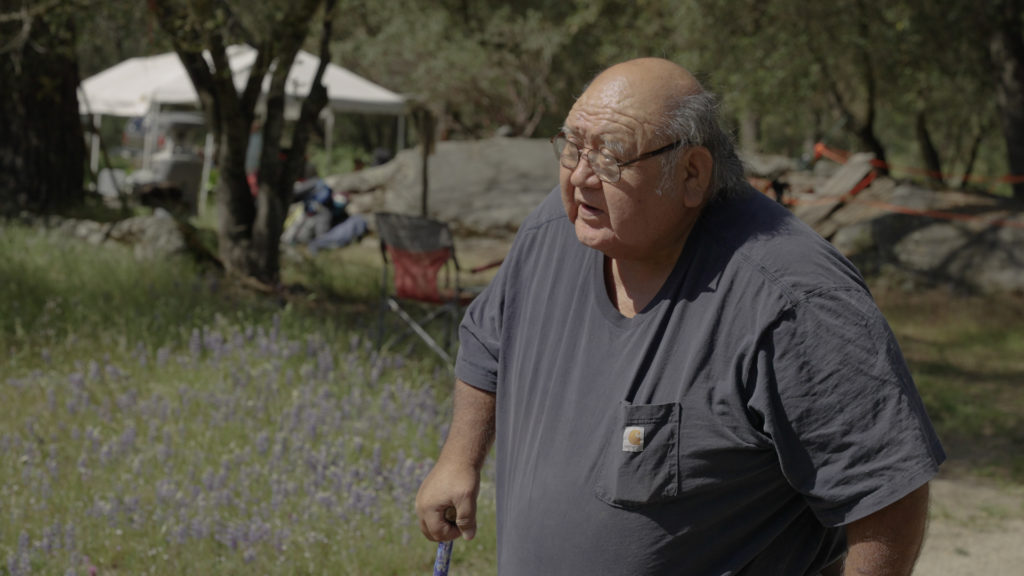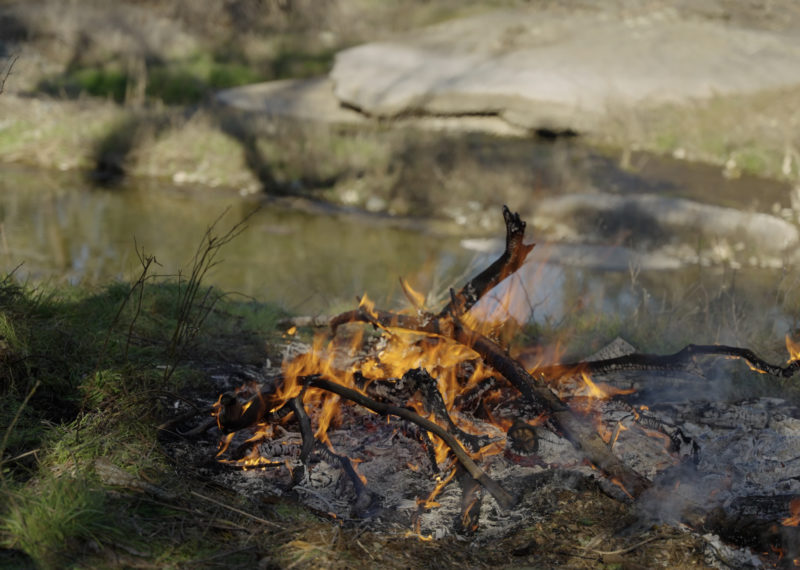Before fire suppression policies were put in place at the turn of the 19th century, Indigenous communities across California relied upon regular brush clearings to access culturally important plants. Where dead twigs, branches and leaves burned, ferns and tobacco plants re-emerged with healthy root systems, free from overgrowth that could sap their access to rainwater. These plants were vital for food, medicines and baskets.
“Cultural burning means that the kind of fire we put here is to enhance and support in rejuvenating cultural resources,” said Ron Goode, leader of the North Fork Mono Tribe.
Land cared for with small burns is also “wildfire defensible,” he added, rid of brush that can fuel wildfires. But cultural burning is a delicate dance: Targeted areas require weeks of preparation, and each plant, a unique burning technique. Done correctly, the practice makes way for flowers and berries to blossom. Done poorly, it can ruin crops or quickly spread out of control.

The North Fork Mono Tribe, alongside other Indigenous groups, lost the right to practice and refine traditional burning techniques with the passage of the 1850 Act for the Government and Protection of Indians. (The law also facilitated the removal of Native people from their ancestral lands.) Cultural burns remained outlawed for more than a century.
“Not only was this suppression but oppression for our culture,” Goode said. “If we don’t have the materials that we need for our baskets and other cultural items, or our food and medicines, then our culture is not really much of a culture.”
But many tribes have struggled to retain generational knowledge on cultural burns, said John Waconda, Indigenous partnerships program director at the Nature Conservancy and a member of the Pueblo of Isleta Tribe. “If we don’t start practicing [cultural burning], bringing it back, our generation is going to be responsible for its loss for future generations,” he said.
Last year, California passed a law removing the liability risk for Indigenous groups and individuals who set controlled burns. And this year, a sweeping federal package could allocate $500 million to managing dead forest fuels and conducting “prescribed fire activities.”
The Wildfire Response and Drought Resiliency Act (HR 5118), a 49-bill package, would solicit input from tribes on a 10-year wildfire plan and establish training centers for prescribed wildfire techniques. The White House issued a supportive yet cautious statement about the bill after it passed in the House on July 29; the Senate has yet to take it up.
Don Hankins, professor of geography and planning at California State University, Chico, said the legislation reflects a growing recognition, at the federal level, of Indigenous conservation practices. “There’s a lot of alignment in recognizing, across different policies, to engage more with tribal communities,” he said, also citing the Biden administration’s consultations with Indigenous groups as part of its America the Beautiful conservation program.
Hankins, who advised on California’s prescribed burning liability bill, said he relies on prescribed burns to tend overgrowth around his property in Butte County, where the 2018 Camp Fire — the deadliest and most destructive in California’s history — took place.
“It’s pretty nuanced. There’s a lot of detail that goes into it,” he said, explaining why it’s so important to engage Native communities, who bring generations of knowledge to the practice.
Cultural burning can also be a boon for biodiversity, Hankins said. In 2013, he published a paper that compared biodiversity gains following prescribed Indigenous burns at different times of the year. As part of his research, he scoured tribal dictionaries and interviewed Indigenous elders. The following year, he published a report that found that, over time, prescribed burns significantly increased native plant cover compared to control areas.
“Many of our forested ecosystems depend on fire,” Hankins wrote in a recent op-ed in the Los Angeles Times. “They evolved with frequent blazes touched off by humans or lightning. However, active stewardship was disrupted, first by the genocide and forced removal of Indigenous peoples, then by the criminalization of cultural burning activities.”
Waconda said that painful history means that any governmental attempt to use traditional ecological knowledge must also “empower tribal communities to make their own decisions” and focus on building trust. He pointed to the Prescribed Fire Training Exchange (TREX) around the Klamath River Basin as one successful program in which tribes and other fire practitioners were able to share knowledge about prescribed burning techniques in a way that was respectful toward Native practices and knowledge. HR 5118 would mandate the creation of at least one center to host training exchanges like these.
For practitioners like Goode, cultural burns offer an opportunity to address the West’s wildfire crisis, preserve the land and keep a tradition alive.
“People are afraid of fire because of what it’s done,” Goode says. Indeed, the state has seen millions of acres and thousands of structures burn in recent years. “But are we doing anything about it? No, we’re not.”
“To be able to get out here on the land and put a little fire down and beautify the land,” he says. “Means a lot and makes a lot of difference.”
This article was made possible by a grant from the Open Society Foundations. Nexus Media News is an editorially independent, nonprofit news service covering climate change. Follow us @NexusMediaNews.



